Increase Bat Speed Power By Hitting Ball Better, Farther, & Harder Using This Baseball Or Softball Drill | Buster Posey Swing Breakdown Analysis
Learn how to increase bat speed and power by hitting the ball better, farther, and harder using this baseball or softball drill. Discover how in this Buster Posey swing experiment, breakdown, and analysis.
Buster Posey Swing Breakdown Experiment: ADD 6-mph To Bat Speed Not ALL In The Hips?
Question: Is Increased Bat Speed ALL in the Hips?
Using the Zepp (Labs) Baseball app, I wanted to use the Scientific Method to analyze whether Buster Posey’s hips OR spinal mechanics is what increases bat speed.
Background Research
Most elite hitting instructors, pros, and Hall of Famers think it’s ALL in the hips. The “it” is a mystery even to them. It shouldn’t be this way. When we look at proven human movement science, we find that just firing the hips isn’t good enough. My question to those people is, what about the piece of hardware above the pelvis, attaching it to the shoulders – the spine?
Before getting into the experiment and analyzing Buster Posey’s swing, we need to lay ground work first. Watch this THREE videos first:
- Miguel Cabrera and the timing of torque.
- Josh Donaldson v. Jose Bautista: how spine engine mechanics are amplified by Gravitational Forces, and
- Adrian Gonzalez: how-to naturally spring load the body.
SCIENCE-BASED TRAINING:
Improve your hitting strategy dramatically by applying human movement principles.
Learn not only how and what to train but also the science behind the methods.
Hypothesis
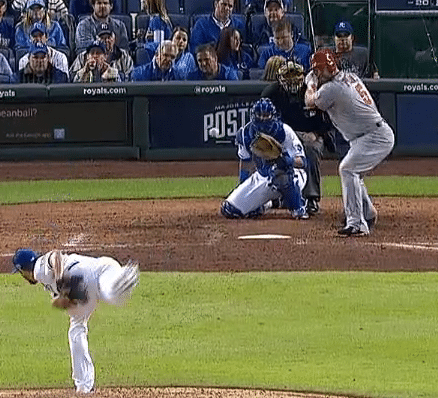
Albert Pujols NOT showing his numbers like he could. Definite hip hinge (tilt) towards the plate. Photo courtesy: MLB.com
Based primarily on my research and study of Dr. Serge Gracovetsky’s book The Spinal Engine, and Thomas Myers’s book Anatomy Trains
, I believe a hitter like Buster Posey, that shows the pitcher their numbers – while keeping the hips in neutral – creates the separation (or spinal torque) needed before landing to produce natural friction-free repeatable power.
Rather than just focusing on the hips to go first, and the front shoulder to stay on the pitcher. In the experiment, for the sake of brevity, I’ll differentiate between the two with “showing numbers” or “NOT showing numbers”.
Buster Posey: Not ALL in the Hips Experiment
Equipment Used:
- Zepp Baseball app,
- ATEC Tuffy Batting Tee,
- Rawlings Official NCAA Baseballs,
- Two yellow dimple baseballs (feedback markers),
- Flip Video Camera and Tripod, and
- 33 inch, 30 ounce Pinnacle Bamboo bat.
Setup:
- Yellow dimple ball feedback markers = my bat length, plus two baseballs
- Distance from plate = end of the bat touching inside corner of plate, and knob of bat touching my mid-thigh
- Tee was set one baseball’s length behind the front feedback marker, and tee height was about mid-thigh
- Forward momentum was eliminated in this experiment, and I hit from a 1-2 second pause at landing
- First 100 baseballs hit was “NOT showing numbers”, focusing on hips first, and front shoulder pointing at the pitcher at landing
- Second 100 baseballs hit was “showing numbers”, focusing on showing numbers, slight down shoulder angle, and hiding the hands
- There was about 30-45 minute break between both Buster Posey Experiments
Data Collected (Zepp Baseball App):
Data Analysis & Conclusion
- Average bat speed for NOT showing numbers at landing: 73-mph
- Average bat speed for showing numbers at landing: 79-mph (+6-mph)
- Highest bat speed for NOT showing numbers at landing: 82-mph
- Highest bat speed for showing numbers at landing: 88-mph (+6-mph)
- Hand speed max for NOT showing numbers was: 27-mph
- Hand speed max for showing numbers was: 29-mph (+2-mph)
As you can clearly see, “NOT showing numbers” puts a hitter at a clear repeatable power DISADVANTAGE.
Notes

Andrew McCutchen: showing numbers, slight down shoulder angle, hiding hands, hip hinge (tilt) towards the plate. 2013 NL MVP. 3rd in MLB OPS in 2014. All 5’10”, 190 pounds of him! Photo courtesy of MLB.com.
- I don’t go out and take 200 swings in a given day, so I was getting fatigued by the time I got to the last hundred swings (“showing numbers”) part of the experiment. Goes to show this isn’t about muscles, but connective tissue.
- Remember, I purposely eliminated forward momentum from the Buster Posey Experiment because I wanted to reveal how “showing the numbers” can effect a hitter’s bat speed. CLICK HERE to see the results of a Forward Momentum Experiment I did using the Zepp Baseball App.
- “Showing the numbers” IS NOT adding more rotational ground to make up during the Final Turn. It’s a natural way of super-charging connective tissue over muscles.
- A slight bend at the waist (hip hinge) towards the plate – before landing – improves efficiency, not detracts from it. Just look at Posey, McCutchen, and Pujols pictured hitting home-runs in this post. This is how an athlete takes the slack out of the posterior chain (calves, hamstrings, butt, and back). ALL shapes and sizes use it.
- During NOT showing the numbers, I felt like I had to guide my hands more. It took more effort to extend through the ball instead of rotating off (rolling over), than with showing the numbers.
- Make sure when “showing the numbers”, the hitter isn’t losing sight of the incoming pitch with the back eye.
- Also, make sure when using a slight down shoulder angle that the head stays in-line with the spine. The angle is slight, about five to ten-degrees.
The Bottom Line?
When we analyze hitters like Buster Posey, we NEED to hold our analysis to a higher standard. Proven human movement science. We have to go away from mechanical fixes based on “feelings”. The “Oh, I’ve been working on this and it seems to work”, isn’t good enough. Neither is, “Ted Williams said so!” Or, “I watch 25-hours of high level hitting footage in a day, so listen to me.” That stuff DOES NOT matter. Science does. I want to see the data, NOT listen to feelings. The heavy lifting has been done for us. It’s up to us to apply it.
- Unlock Explosive Bat Speed: Fascial Fitness & Springy X Pattern for Rotational Power in Baseball - January 17, 2025
- Overcome Pregame Anxiety: Proven Mental Training & Breathing Tips for Baseball & Softball Players - January 9, 2025
- Master Youth Baseball Power Drills: Lateral Bending, Head Over Foot, Swing Rhythm for Game Results - January 6, 2025


![Buster Posey VIDEO: Not ALL In The Hips [Experiment]](https://hittingperformancelab.com/wp-content/uploads/2014/10/buster-posey-showing-number-compare.png)
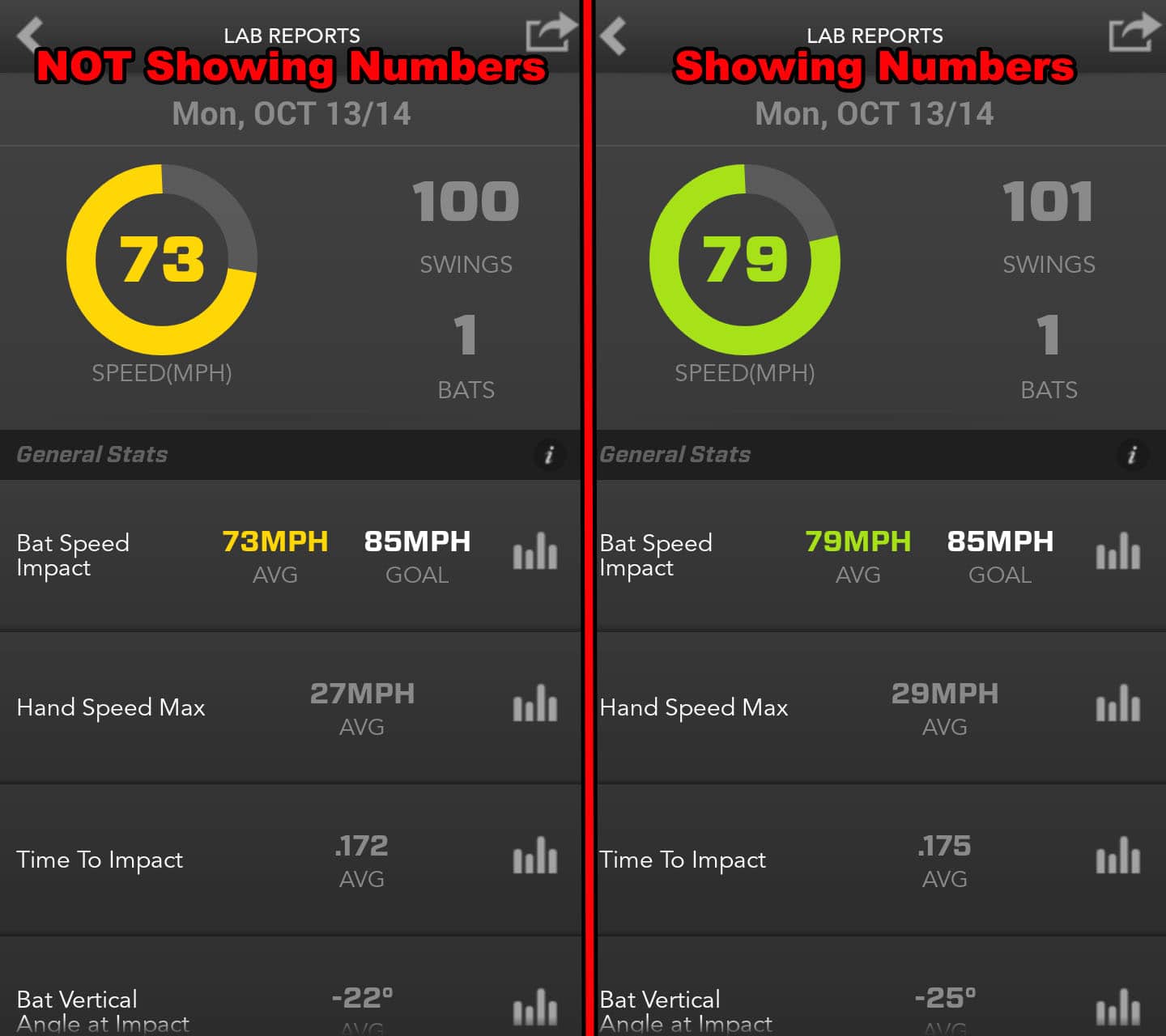
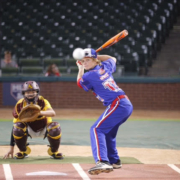




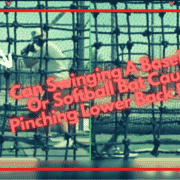

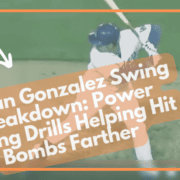



Excellent work Joey. You have made some very bold statements with this piece. You’re going to have some people with their backs up with some of the things you say here – but personally … I couldn’t agree more with what you are putting forth, and there are a lot of others that are on your side of the fence on this as well. Hitting is primarily an upper body skill. Of course the lower body is important, and having the proper mechanics occurring in that part of the body during a swing is vital and cannot be overlooked – but … there can’t be any question about which half provides more to the final outcome, and thus deserves more of our focus. It’s the upper half 10 times out of 10.
Far too many coaches spend the majority of their time training lower half mechanics at the expense of upper half technique thinking that as long as the lower half does this or that … the upper half will just naturally follow suit and everything will be all good, and the player can ride merrily into the sunset. I’ve watched countless on-line presentations where in an 6 minute piece, the instructor will spend 5 of it describing what happens to the hips, knees, etc, and about a minute on the upper half. It’s sort of like this … “So the hips start the swing, and the back knee drops and the back hip comes through … oh ya! … I almost forget … and then you swing the bat”. I don’t get it! How can the lower half be looked at as the most critical part of a baseball swing, when it’s the arms that are holding the bat? – and they are attached to the torso? That’s like saying the arms are just as important as the feet in kicking a soccer ball!
I submit that in keeping with the principle of cause and effect in sport specific movement, that the principle function of the lower half is support. The lower half, including the pelvis, anchors the body, and provides the stability for the mobility of the upper half. The rotational velocity, and ROM of the upper half (especially the arms) far exceeds that of the lower half, and as coaches we must respect this as a provable, scientific fact.
Let’s not forget that after the dust settles in any baseball swing analysis, if we reverse engineer the swing we’ll see that the critical instant occurs when the barrel meets the ball. So THAT is the most important thing in the entire exercise of hitting a ball. With that in mind … we can say with 100% certainty that the only things that matter in the end are the ball, and the sweet spot of the bat. All the rest I.E. what our feet do, what our head does, etc, must be geared toward the bat head meeting the ball. The individual aspects of the skill are all important – no one will argue that – but without question, the proper, or improper use of the upper body has the potential to have the most impact on the final outcome, which is of course the bat meeting the ball. Let’s also not forget that it’s the hands (which are attached to the arms) that are in direct contact with the bat.
I find it most interesting that you have presented two controlled and different swings, and you’ve made the upper half the focus of the testing – and your findings are quantified. When you showed that you can get more velocity on a bat when you over-rotate the top half, we must conclude that it’s because the top half is what swings the bat. I think that is the most revealing truth of your presentation. Great work again Joey – as usual. You are a very astute coach.
Bob, you put into words what I was thinking doing this post. Too much focus with coaching hitting over the past 3-4 decades has been on turning the hips. To me, the hips will turn naturally when you hit a ball. But the 5-ton mythical beast eluding most, is what does the rest of the spine and shoulders do?
The argument is, well, if you get the hips to go first, then the shoulders will follow. BUT, they DON’T! The shoulders go at the same time as the pelvis for most young hitters. That was the premise with NOT showing the numbers. But if you look at Dr. Serge Gracovetsky’s work on spine engine mechanics, Thomas Myers’s Anatomy Trains, and what most small boppers (McCutchen, Aaron, and Cano) do, they set up the spine engine mechanics before their front foot hits the ground.
You’re right, at the end of the day, it’s about efficiently moving the barrel to hit an unknown pitch. A baseball/softball hitter HAS to move more efficiently, than even a golfer, to be successful at the sport. Hitting an unknown pitch is the “X” factor, I think, that separates other similarly challenging sports. BUT, it all comes down to efficiency. How well can a hitter use the laws of Bio-Mechanics, Biology, Physics, and Gravitational Forces to send the ball flying. NOT muscles.
Thanks so much for posting here Bob, I weight what you have to say as gold. And I know others will benefit from your knowledge as well, so I appreciate it brotha’ from anotha’ motha’.
It looked to me like you had a little elbow leak in the showing numbers swing. Did I see that right? No expert, of course. Just trying to watch and learn. Thanks again for the study.
That’s a tough camera angle to see that. It could be the sun’s position has changed and the shadows are different.
Wondering about hand position in the showing numbers component. Didn’t really address elbow peek or hand position. Is the upper arm to trunk relationship altered?
Good question Lee. Hand position is around the back shoulder (height-wise), and somewhere over and behind the back heel at stride landing. To help with downhill shoulder, hitter can increase the height of the back elbow to be somewhere around the back earlobe (height-wise).
I have a few of the modules (which are great by the way) but I have a question on the studies you do with Zepp (like this one Im commenting on). On some of these studies where you post screen shots from the Zepp, is there any way you can post video of some of the swings as well?
Hey Lance, at about the 0:50 mark on the video, I show the two experiment swings.